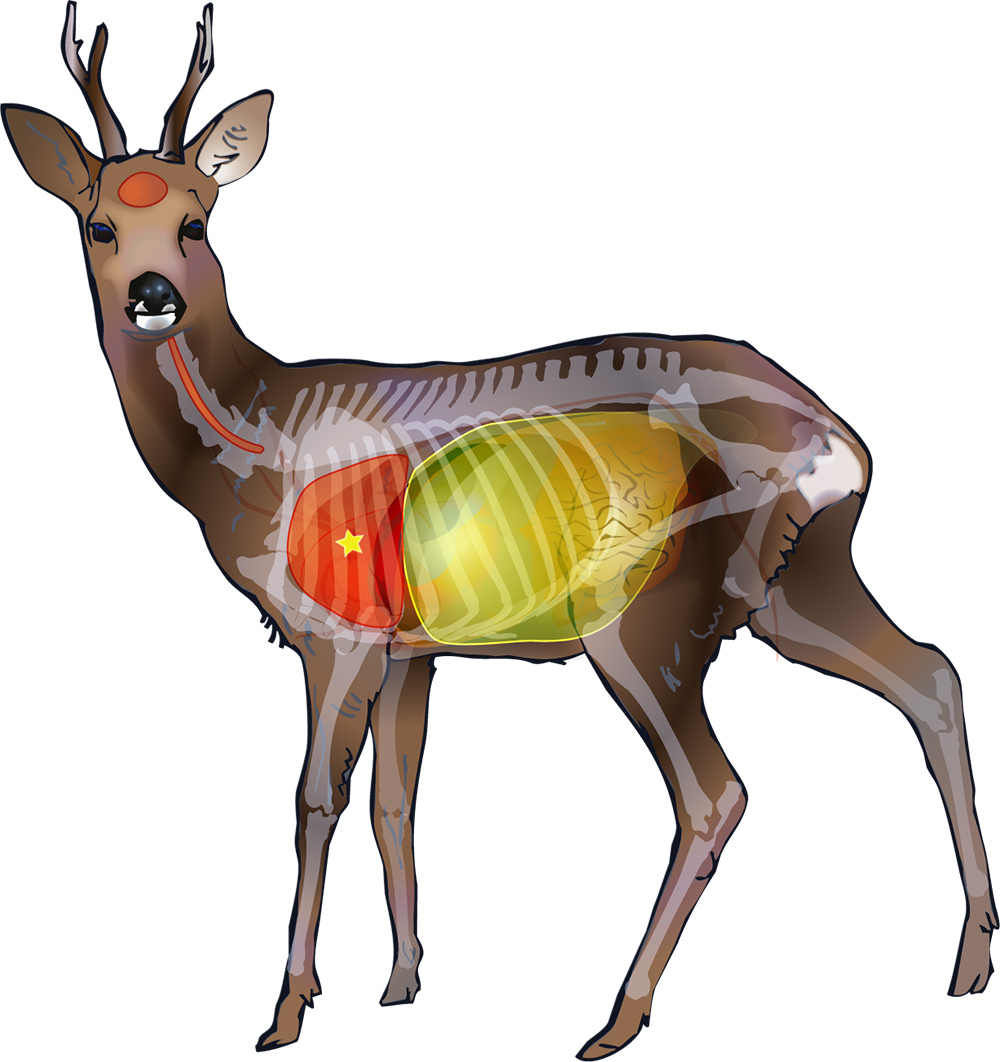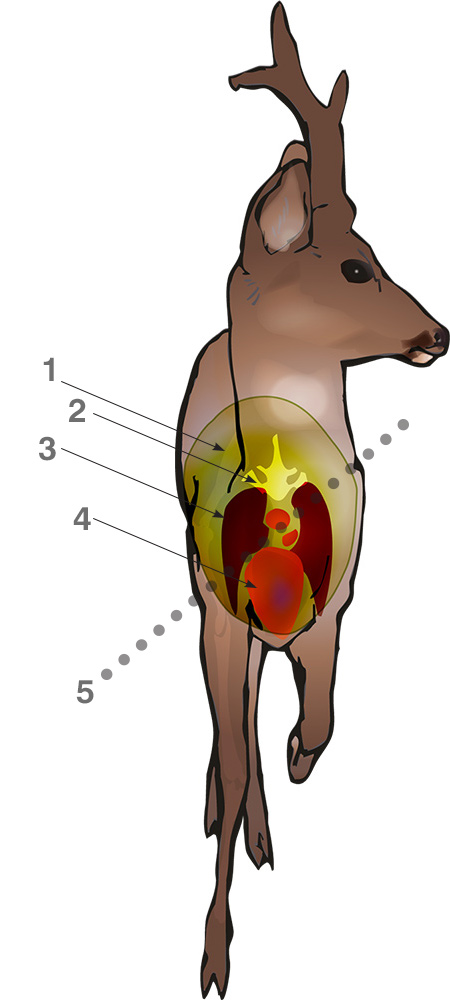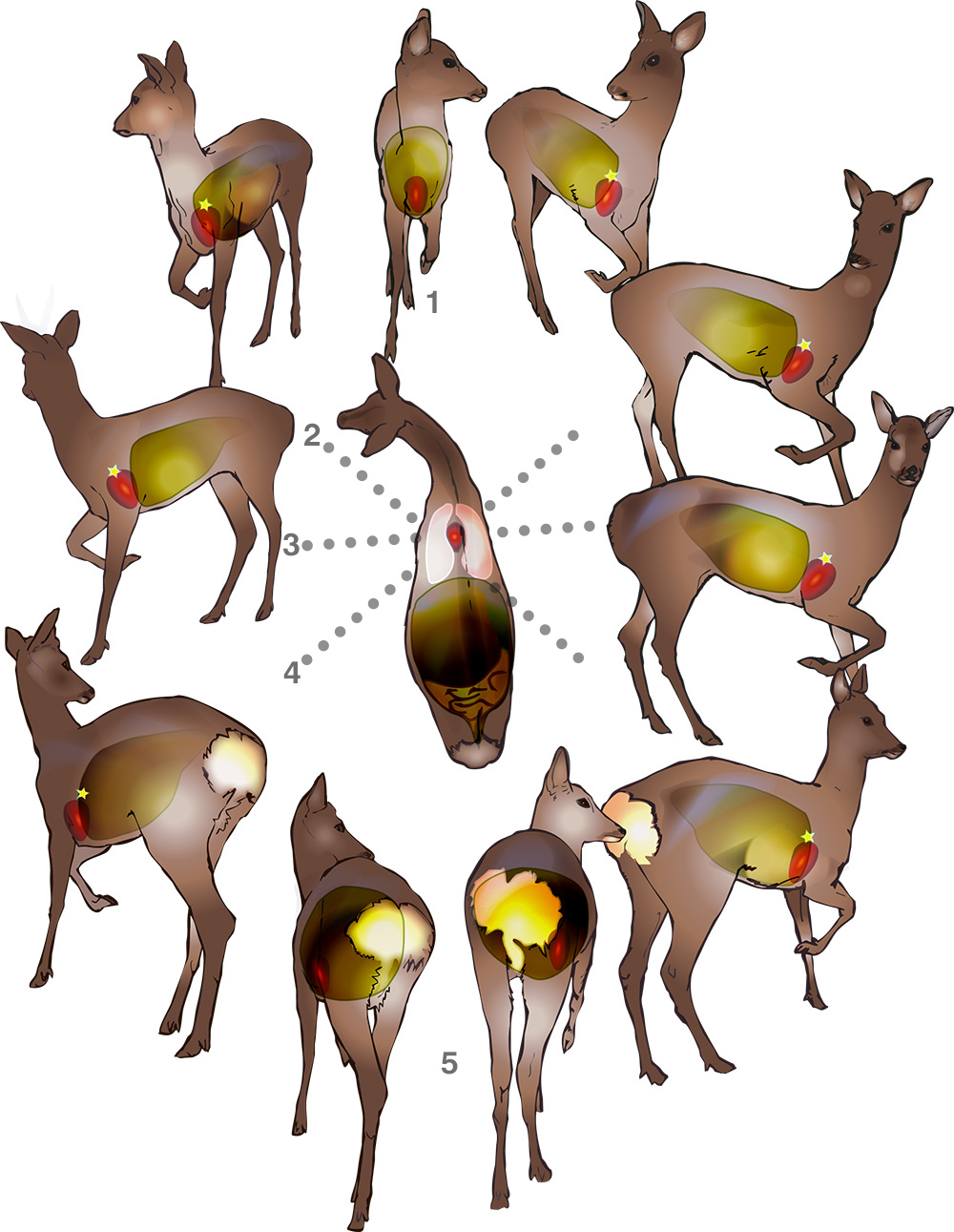Introduction
This guide describes how the anatomy of deer determines where shots should be placed to achieve a rapid, humane death, and at the same time avoid carcass contamination. The Follow up, and Firearms and Ammunition guides are essential companion reading.
Humane death
The objective of good bullet placement is to induce unconsciousness as swiftly as possible, rendering the animal insensitive to pain, and for this to be quickly followed by death. A correctly placed bullet causes death within seconds.
Vital zones
When a bullet strikes certain areas of the body, a rapid death will result. These areas are known as “vital zones” and are inside the animal.
Chest
The recommended shot is to the chest.
The chest vital zone is centred on the complex of blood vessels just above the heart. Damage, either to these blood vessels, the heart itself and/or the lungs that surround it, will cause a rapid loss of consciousness and death through loss of blood circulation. Because the chest vital zone is by far the largest it should be the shot of choice in most circumstances. For an animal standing broadside, the aim point is halfway up the chest and in line with, or just behind, the vertical line of the foreleg(s), see Fig2.
A common reaction to a lethal chest shot is that the deer will run a short distance, then collapse, dead. A shot slightly more forwards, which involves both shoulders, is equally humane and will usually cause the animal to drop on the spot.
Head
A shot which destroys vital areas of the brain (head shot) will achieve instantaneous loss of consciousness and death. However, the brain is a very small target and for this reason head shots should be avoided except for humane dispatch3. The brain is located high and towards the back of the skull, a shot fired on the horizontal must strike above the level of the eyes. If a head shot becomes necessary a shot from behind is preferred. For humane dispatch at extreme close range the shot would ideally be from the front, but may have to be from any angle. Be aware that for male deer, antlers and pedicles may cause a significant obstruction if shooting from the side.
Neck
A neck shot will prove fatal if the spinal chord is severed, if it is not, loss of consciousness cannot be guaranteed. The spinal chord is a very small target and for these reasons neck shots should be avoided.
If a neck shot becomes necessary it should ideally be taken from behind.
Other areas
Shots elsewhere in the body will be the result of a stray shot. They are thankfully rare but are unlikely to be immediately fatal and must be followed up as soon as possible1 .
Anatomy
It is important to be familiar with the anatomy of deer so that the position of the vital zones can be located (figs. 1-3).

Red areas indicate the vital zones referred to in the text. The yellow star indicates the preferred aim point for a chest shot. The shooting “clock” on next page together with Table llustrates how the chest aim point must vary according to how the animal is presented

1: shoulder blade; 2: spine; 3: lungs; 4: heart (note that it sits low in body; 5: any line of shot taken away from 90 degree broadside must consider bullet entry point and the angle of the path of the bullet through the body
(needs more arrows etc)

1 & 5: do not attempt these chest shots; 2: a 45 degree shot; 3: broadside; 4: a 35 degree shot
Shooting clock. Yellow star indicates the aim point required for the bullet to pass through the centre of the vital zone. Note that only over a narrow range of angles (at or close to broadside) is the shot likely to be “clean” and not involve the rumen. The gut completely obscures the chest from behind and will be damaged over a wide range of angles in other positions. Do not attempt chest shots outside of the angles indicated.
[printfriendly]
